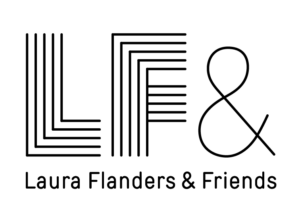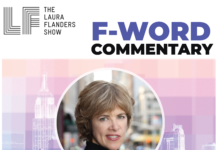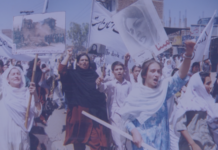Prefer to Listen?
Subscribe to our podcast to listen to this week’s episode on your favorite podcast platform.
What role did Warrior Women play in the Wounded Knee Occupation, and the American Indian Movement (AIM)? This February 2023, as we mark the 50th anniversary of the occupation, Laura speaks with two Indigenous women activists, a mother-daughter duo, who have been involved in the Red Power movement their entire lives. Madonna Thunder Hawk, Oohenumpa Lakota and Lakota Matriarch, Marcella (Marcy) Gilbert, Lakota/Dakota/Nakota, with Elizabeth Castle, co-director of the documentary Warrior Women, have co-organized the Warrior Women Project, an oral history archive that’s the first of its kind. Hear how the project, and an interactive exhibit set to open this month, are finally putting a spotlight on Indigenous women at the frontlines of the movement.
“What the Warrior Women Project is doing is keeping that empowerment moving forward, and offering it to others. It teaches our reality of who we are within the United States, so that we don’t disappear, so that we don’t melt into the melting pot.” – Marcy Gilbert, Lakota/Dakota/Nakota
“The connections in the Red Power Movement days are the same today. It’s all about land. Indigenous land struggles all over the planet, wherever colonization happened and is happening, has always been a land struggle. Whether it’s in Northern Ireland, or here in our territory, the Dakota, Lakota territory, or Palestine, it’s an Indigenous struggle, and it always starts with the land.” – Madonna Thunder Hawk, Oohenumpa Lakota and Lakota Matriarch
Guests
- Madonna Thunder Hawk (Oohenumpa Lakota): Lakota Matriarch; Co-Organizer, Warrior Women Project
- Marcella Gilbert (Lakota/Dakota/Nakota): Lifelong AIM Member; Co-Organizer, Warrior Women Project
Get Involved
Warrior Women Project is hosting a special community exhibit for the 50th Anniversary of the 1973 occupation of Wounded Knee on February 25. The exhibit features never-before-seen interviews with the ‘matriarchs of Wounded Knee’ from Pine Ridge who were the driving force behind the occupation. Learn more at warriorwomen.org/wk50.
Related Episodes, Articles and More
Head to our Patreon for a list of related episodes and articles. And check out our full Indigenous Power library on YouTube
Transcript
LAURA FLANDERS: 2023 marks the 50th anniversary of the Occupation of Wounded Knee, perhaps the best known Native American protest of the 1970s. Among the famous photos of that era from the Civil Rights Movement and the anti-war protest years, that picture of Indigenous activists facing off against National Guard troops, U.S. Marshals, and the FBI there in the snowy plains of South Dakota is one of the iconic images of the time. Perhaps you know, there was a 71 day standoff, a federal agent was paralyzed, and two Native American activists lost their lives. What you might not know is how the whole thing got started, and the role that Indigenous women played. The fact is it was Indigenous grandmothers and respected elders who decided that, after years of trying to address corruption on the Pine Ridge Reservation, and broken US government treaties, dating back to the original 1890 massacre of Wounded Knee, it was women who decided it was time to take a stand, and that’s what they did. The absence of women in the history of that moment and in the American Indian Movement or AIM itself, is part of what a new project, called the Warrior Women Project is working to fix. Over the last many years, documentarian Elizabeth Castle has been interviewing Indigenous women activists and building an astonishing archive. This month, in conjunction with the anniversary, the project is opening an interactive exhibit in Porcupine, near the site of the occupation. Along with the oral histories and exhibition, Castle also co-directed a documentary, “Warrior Women,” which introduced me to the two extraordinary guests I have the honor of having with me today. Madonna Thunder Hawk and Marcella or Marcy Gilbert are mother-daughter organizers, who were involved not only in Wounded Knee, but to judge from the documentary in just about every Red Power uprising from the sixties to Standing Rock in 2016. Marcy grew up in the movement for Indigenous self-determination and was a student at the We Will Remember Survival School that her mother founded back in the day. Today her work focuses on food sovereignty and cultural revitalization. Her mother, Madonna, established that school and went on to do many things, among them become the tribal liaison for the Lakota People’s Law Project in their fight to stop the illegal removal of Native children from tribal nations. They are both joining us from their home on the Cheyenne River Sioux Reservation. and I couldn’t be happier to have them join me at this very exciting time. And let’s start with you Marcy. There’s going to be a lot happening around this anniversary. Are you going to be taking part? And what do you think people will see who are there?
MARCELLA GILBERT: When the planning was happening, I was like, okay which days am I going to be there? And what am I going to be doing? Because I knew it was a big deal. So I started looking at the agenda, and every day they’re honoring, we and others, are honoring members of my family. So I was like oh, I gotta be there for all four days.
LF: What about you, Madonna? What are you looking forward to? What will you be doing in this anniversary?
MADONNA THUNDER HAWK: I’m an elder now, so you know, I don’t have to worry about details and running around and organizing, The younger ones can do that, so yeah I’m very excited. Hopefully we’ll get to see some of the veterans of Wounded Knee ’73, those of us that are left, that will come in from all over the country, you know. So, it’s going to be an amazing time.
LF: In the film “Warrior Women,” this scene plays out, with women including Madonna and Marcella, talking with others about what happened there at Wounded Knee.
– When I think of of my people, Indian people, I think of course of Wounded Knee, because that was the awakening. That was the awaken, the rise of our people.
– And we know now that that there is going to be increased hostile activity against the American Indian Movement. With that, AIM must also increase its activity
– Wounded Knee, we were just on our way through. A lot of different stories of what happened with different people, because not everybody got the same information. I was there, so this is what I can remember happened. There was always, always a committee or a group of people that would request our presence. They wanted us to come down to the reservation and meet in the little community of Calico. We were just going to go for the day and be back in Rapid that night. We got word that Porcupine community wanted us over there, because they knew we were on the res. We had to turn off and go north through Wounded Knee. We had a whole bunch of cars. I was like in the middle. And I happened to look over, towards the BIA building. And I noticed there was a lot of, looked like military vehicles. And then I looked on top of the BIA building and there was sandbags, and you could see barrels of big guns. I don’t know what they thought we were doing. We were coming through town, you know. It wasn’t planned. I mean, I had my 10 year old son with me.
– Well I think the federal people are just itching to come in here and annihilate the entire population. It’s what it looks like. The local bureau officials don’t seem to realize it. They’ve been so used to pushing Indians around. They’ve pushed us around for years and years. Well this is the last stand here.
– There was gunfire in Wounded Knee for the second consecutive night.
– We knew when there was going to be a firefight. And one night they opened up. I could just feel it going over my head, those tracers. And I thought, you know, I thought I was dead.
– The first blood that was spilled at this Wounded Knee episode was spilled Thursday night in a gun battle in which two young Indians were wounded.
– It was very, very real. I didn’t know if I was going to see my mom and brother again.
– In the news, we were the terrorists, we were the militants and –
– Yeah, they made it sound like you guys had all these guns and all these weapons. And…
– There was only one AK 47. Bobby was carrying that, behind us carrying that AK. And then no, no ammo for it and nothing. Was walking up like that. And here we turned around and he said, oh no look at this guy, just because the press is in here. Look at him, you know? He said, yeah man. He went like this and here they took this picture. I know!
– The famous picture of Wounded Knee, with the warrior with the AK, and here we were just teasing him and raising cain with him. That’s why he is just laughing.
– After about a week into being in Wounded Knee, oh, it was nice, the sun was shining. And it was just a warm breeze. And then, some guys walked by. They were just enjoying the day too. And they came walking by, hey Madonna, what’s happening? I said, oh yeah it’s really nice I said. And that’s when I really realized that there’s very few people that experience true freedom. And that was one of them, physical freedom. But also mentally, you know, physically, everything, emotionally. Now I understand why my ancestors did what they did.
LF: Are there things that you think we misunderstand, we outside of the community, misunderstand about the American Indian Movement?
MTH: It has absolutely painted a negative picture. It’s always about the violence, it’s always about guns, you know, that kind of thing. But you look at what the movement actually accomplished, and continues to accomplish, the Survival Schools’ alternative education, that didn’t exist back then.
MG: And specifically for Native children, it didn’t exist. The International Indian Treaty Council. I was a youth delegate that got to go to the first trip that we went as a nation to the United Nations, and that work continues today. On the Pine Ridge Reservation, the KILI radio station, that was a product of the American Indian Movement. There was a health clinic, to provide adequate healthcare to our people. That was a product of the American Indian Movement. I mean there’s so, there’s tons of stuff out there that people don’t believe, or don’t know, because the media, the government painted a picture that we’re a group that needs to be, again, terminated.
LF: You tell the backstory about that image of Bobby Onco with his AK 47 in that clip we just played. Madonna, I mean, we can laugh about it and you do but it made the whole situation much more dangerous it seems to me. Are there things you would add to what Marcy said, about how the misrepresentation of that moment affected your lives?
MTH: We knew about how biased the press was already. They had been, you know, the years that were before Wounded Knee and after. So we knew what was going to happen. We knew it was going to, how they were going to look at us and paint the picture of militants and we stand alone. You know, nobody was going to put out the true story. And we knew that, because we had no press. There was no Native press.
MG: After Wounded Knee, when everybody was taken into jail and criminalized immediately for, I don’t know what, that’s still like what did we do wrong? You know, I don’t know what we did wrong. But the media participated in determining what we did “wrong.” And so, one of the things that stood out to me was my mom was looking at 120 years in prison. Because of the media. The media implanted that fear.
LF: Leonard Peltier is, I believe, in his 48th year of incarceration, despite many, many global efforts calling for clemency for him. Native American activist, there at Wounded Knee. Madonna, how do you connect his story and the campaign around his incarceration, to what you are doing today?
MTH: His story is like the modern day history of what happens to our people. It isn’t about him personally, about his charges or what he did. It’s what the FBI had done at the time, and what they’re covering up.
LF: When I looked at the history, not your history but the history in the so-called mainstream, it’s all about guys and mostly guys with guns. How does putting women in the picture change that story, Madonna?
MTH: Well, I think it changes the story for those outside of our world, outside of the Indian communities, territory. Because we’ve always known it’s been that way. You know? We’ve never had to singly say women should be you know, talked about. We’ve know that, generation after generation. It’s the outside world that doesn’t know.
LF: And how would you answer the question Marcy?
MG: I believe that it’s going to strengthen our women and bring back our societies. Within our communities, we had societies of women that have responsibilities, that kept their communities healthy and vibrant and powerful and we had, made sure we had a future. And so, and those are slowly starting to reform themselves, now. But this part of it, we really, in our history, all of us, you look at any Indigenous population from anywhere in the world, there were women warriors. And so what the Warrior Women Project offers is our right to exist as warriors, to protect our people. And so we had warrior women societies. And so I believe the future is, you know, empowering women. It’s a woman’s future. I mean, look what’s happening. It isn’t just happening among our people, it’s happening everywhere. Women are powerful. And so, we’re taking our place in that movement.
LF: I’m going to play the trailer from the film “Warrior Women,” which I think makes this point very strongly.
– This country is built on the bones of our ancestors. We have our culture. We have our way of life. We have our language. What we’re trying to do is retain it, retain our right as a people to be Indian.
– It was truly an empowering, free time. Watching the women, it is amazing how they handled everything. Protecting our people and our children’s future and fighting, being warriors in that way.
– The press, they just automatically gravitated to the men. And who really knew what was going on and was really running the show, were the women.
– We were a movement of families.
– Being the daughter of Madonna, she definitely had a reputation of being strong. And when someone went to her for help, she did what she had to do to make a difference.
– We’re here to stay!
– The water!
– However we get the job done, you know? Whatever it takes.
LF: The Warrior Women Project goes beyond your two narratives. Tell me how? What’s the project doing? Madonna?
MTH: I think it’s very important, because many of the women interviews and voices in the archives, they’ve passed on. They’re gone. And if it wasn’t for this archives, a lot of their stories wouldn’t be known. And maybe, you know, in families handed down stories. But, generally speaking, because of the way patriarchy and the way the whole system is set up, before there were, for example, we didn’t have Native media back in the day. Which we have now, nowadays, you know? So yeah, I think it’s very, very important.
MG: We were totally disregarded. And so this archive is very important. It gives our young people the whole history. It is, it wasn’t just the guys. I mean, the women towed the line.
LF: How does this work connect with your work at the school, Madonna? And why you founded that school?
MTH: It wasn’t so much of a sitting around and holding meetings and talking about it. We just did it, you know? That’s what the children want, and here’s our chance. I wasn’t an educator, I had no clue. But I knew everyday living, and I knew what we didn’t have, as far as our own history. So yeah, it was a good time for us to learn right along with the young people, on how to do this. But our history was there, and our history was solid and we knew it.
MG: When I first went, I was handed the 1868 Treaty and said you need to know this, read it. And so we learned, you know, water rights, Winter’s Doctrine, 1868 treaties, the relationship nation to nation. What does that mean? What are the obligations that this country has to us? I’m part of a nation that has a very unique relationship with this government, and they’re accountable to me. And to learn that as a young person, you’re like, hey man, don’t mess around with me. It was very empowering to learn that I stood for something, I mean something in this country, so, very powerful.
LF: And how would you see the connection between that empowerment and education work and the Warrior Women Project that you’re involved in now?
MG: Well, the Warrior Women Project keeps that kind of mentality, and that kind of education moving forward, so that young people or anybody who gets involved with the project realizes that this isn’t just about Indians wanting their little piece in history. We are the history of this country. We are the history.
LF: One of the interviews done for the Warrior Women Project is with Geraldine Janis. Tell us a little bit about who she is, Madonna. And why this story was so important to capture for the project.
MTH: She wouldn’t call herself a leader, but she was. She was a community leader just by her presence, and understanding what the issues were. It wasn’t, like we said, it was not a protest. The issues go deeper and they’re all land-based. And she knew this, but she also knew that the strengths of community, which was women.
MG: We’d do a protest in front of the Tribal Office and the goons would just push the women aside and laugh at us. And the marshals were on top of the BIA building. They acted like we had guns, you know?
LF: Right.
MG: And we didn’t have anything. See, they found out we weren’t afraid of them. We told ’em to go ahead and shoot us if they wanted to, but we wanted our rights, for the people.
MTH: The fact that Beth got her interview in her story is amazing because it’s for all of us. Not just her descendants, her family and her great-grandchildren and whatever, but for all of our people.
LF: You call them the matriarchs of Wounded Knee.
MTH: Oh yeah, that’s what they were to us. Because they provided the leadership. They, you know, they were there. And they’re the ones that called us out and said yeah, we know there’s police brutality going on all over the bordering towns in South Dakota but here’s what’s going on back home on your reservation.
LF: Where do you see your movement standing now, in relation to others?
MTH: You know, the connections back then in the Red Power Movement days is the same today. It’s all about land. Indigenous land struggles, all over the planet. Wherever colonization happened, and is happening, it’s always the Indigenous, it’s always been a land struggle. Whether it’s in Northern Ireland, whether it’s here in in our territory, the Dakota Lakota territory, or if it’s in Palestine, it’s an Indigenous struggle and it always starts with the land.
MG: The issue is never going to change because the colonizers, they’re always going to want your land. And so the movements are like breathing, living things. You know, we grow, like Standing Rock. Standing Rock was amazing, because we rejuvenated our people with knowledge and leadership and connectivity. So Standing Rock was, not only did it bring all of the Indigenous people together of this hemisphere, but the non-Indigenous too. Because everybody understands the value of water.
LF: Madonna coming back to you, on some of the challenges facing us all, especially Indigenous people, but everyone today as we look at climate change and so much more, do you find there might be answers to some of our challenges in those oral histories that are part of the Warrior Women Project?
MTH: Well yeah, I do. And I think that’s one of the strengths that helps us, those of us that choose to take on the responsibility of carrying this on. And the dedication, it takes dedication too, you know? But, for example, my station in life now, as an elder, you know, I work in within the community of elders, elderly women, you know? And, we have to learn not not only how to carry on our teachings from the past, but also how does that relate to the modern day. It’s helped me, to understand and see that it isn’t all a tale of woe, you know? We’re still here and we’re surviving in this land of colonization. And that our teachings from our ancestors are strong.
LF: The oral histories are streaming online. There’s a website that we can direct people to, through our website. The film “Warrior Women” is available. Again, we’ll put more information at our website. Madonna Thunder Hawk and Marcy Gilbert, thank you so much for joining us. It’s been a pleasure.
MTH: Thank you.
MG: Thank you.
LF: Putting women in the picture does change the story. Growing up in the 1970s, in the not-so-United Kingdom, for example, I was aware that there was some kind of trouble going on in Northern Ireland, but I didn’t know what it was about. As an English person in our newspapers, the cartoons depicted scary guys with guns and bombs, and black berets and trench coats, who wanted to blow us all away. We were trained to be scared and afraid and kind of angry about the inconvenience of bomb threats, but we didn’t know much more than that. It wasn’t until later that I heard there were women involved in that struggle. Women political prisoners behind bars, women who’d taken up arms, women who’d left home and family and community. I wondered what did they care so deeply about that they would do all that. It was finding that there were women in the picture that changed the story for me, provoked my curiosity. And not just mine alone. Is that how sexism works? Yeah, kind of. Having women in the picture made it more complex. I wrote about that in the introduction to a book of essays, called “Real Majority, Media Minority.” You can find it on our website. You can find my full conversation with today’s guests about the difference that women made to the Red Power struggle, through a subscription to our podcast, which you can also find out about at our website. ‘Till the next time, stay kind, stay curious. Thanks for joining me. For the Laura Flanders Show, I’m Laura.
For more on this episode and other forward thinking content, subscribe to our free newsletter for updates, my commentaries, and our full uncut conversations. We also have a podcast. It’s all at LauraFlanders.org.
Show Notes: Related Episodes, Articles and More
*Recommended book:
“An Indigenous Peoples’ History of the United States” by Roxanne Dunbar-Ortiz, More About the Book
(*Bookshop is an online bookstore with a mission to financially support local, independent bookstores. The LF Show is an affiliate of bookshop.org and will receive a small commission if you click through and make a purchase.)
Related Laura Flanders Shows:
• Indigenous Peoples’ Power Watch / Listen-Download the Podcast
• Busting the Thanksgiving Myth: Native Sovereignty & the Red Road Watch / Listen-Download the Podcast
• BIPOC Media: Amplifying Black & Indigenous Collaborations Watch / Listen-Download the Podcast
Related Articles and Resources:
• 50th Anniversary Wounded Knee ’73 Exhibit honoring the women of
• Wounded Knee and events at Pinecrest, along with streaming events, (February 27th, 2023 marks the 50th anniversary of the Liberation of Wounded Knee) Learn More Here
• The Water Protectors Community- Oral History Project, Read More Here
• Occupy Wounded Knee: A 71-Day Siege and a Forgotten Civil Rights Movement, By Emily Chertoff, The Atlantic, Read Here
Podcast Music Spotlight:
“You Are the One The World Becomes” by Morley, from her album Thousand Miles released on Six Degrees Records. Learn More & Listen Here
Accessibility
The Laura Flanders Show is committed to making our programming, website and social media as accessible as possible to everyone, including those with visual, hearing, cognitive and motor impairments. We’re constantly working towards improving the accessibility of our content to ensure we provide equal access to all. If you would like to request accessibility-related assistance, report any accessibility problems, or request any information in accessible alternative formats, please contact us.
















